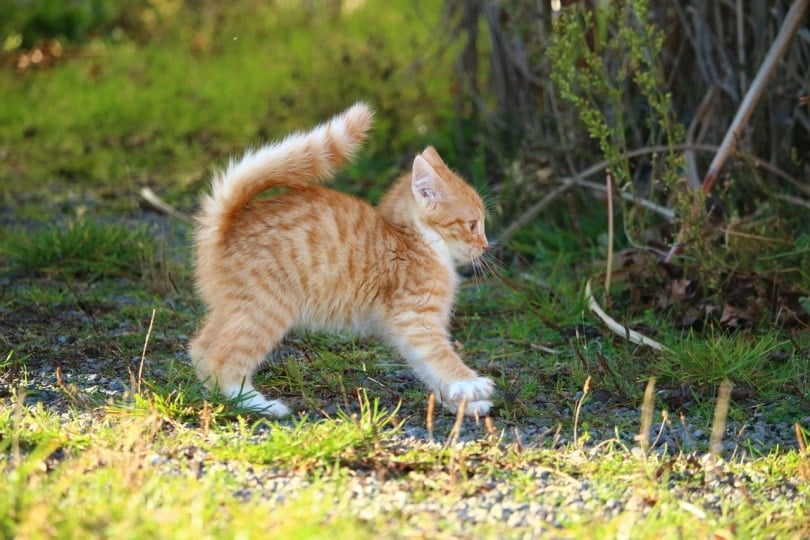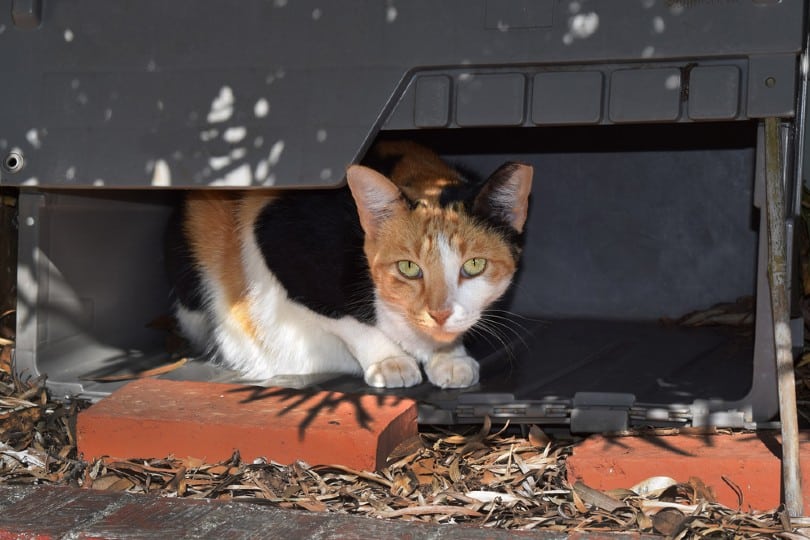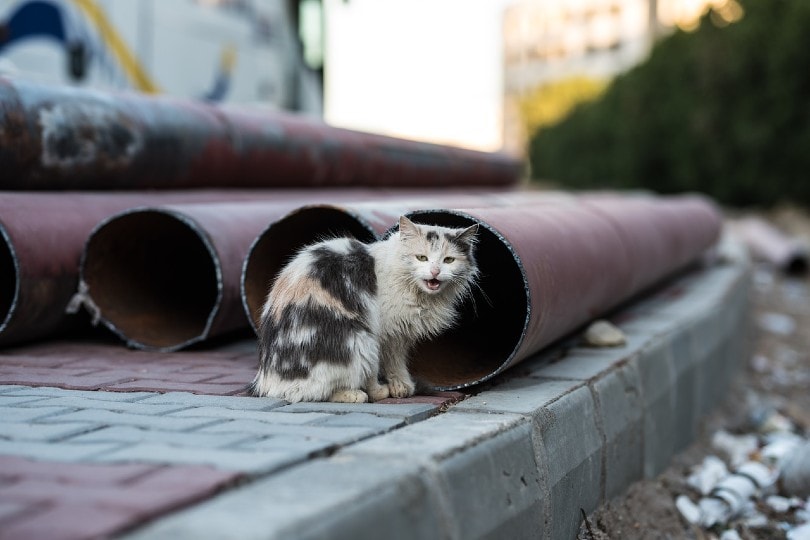The post 21 Australian Cat Statistics & Facts All Cat Lovers Should Know (2024 Update) by Sophie Jeffares appeared first on Catster. Copying over entire articles infringes on copyright laws. You may not be aware of it, but all of these articles were assigned, contracted and paid for, so they aren't considered public domain. However, we appreciate that you like the article and would love it if you continued sharing just the first paragraph of an article, then linking out to the rest of the piece on Catster.com.
Note: This article’s statistics come from third-party sources and do not represent the opinions of this website.
As a cat lover, you probably think you know everything there is to know about these furry creatures. But did you know that Australia has some of the most unique and fascinating cat statistics in the world? Here are 21 of them that will amaze and astound you!
Top 21 Australian Cat Statistics
- 33% of Australian households have at least one cat.
- As of 2022, there are an estimated 5.3 million pet cats in Australia.
- 43% of households have had a cat at some point.
- Cat-owning households in Australia keep an average of 1.6 cats. Most homes keep only one cat (67%).
- 85% of dog and cat owners say their pets have positively impacted their lives.
- 48% of people pay nothing to acquire their cats.
- Pet cats commonly come from shelters or family and friends, with 27% rescued this way.
- 40% of cats were acquired since the COVID-19 pandemic.
- Most pet cats in Australia are mixed breed, with 71% of owners unsure of their cat’s contributing breeds.
- Pure or designer breeds of cats are more likely to be insured with 26% protected with a policy compared to 17% for mixed breeds.
- Only 52% of cat owners spend money on vet bills in the period of a year.
- 19% of Australian cat owners regularly purchase pet insurance for their cats.
- 15% of Australian cat & dog owners avoid taking their pets to the vet because of cost barriers.
- 90% of pet cats in Australia are desexed.
- 51% of Australian cats are allowed to roam outside.
- Feral cats occupy 99% of Australia’s landmass, including its islands.
- The feral cat’s diet is much the same as a fox, with a 98.5% composition overlap.
- The number of wild cats in the bush increased from 1.4 million to 5.6 million after a period of widespread rain.
- Annually, Australia’s feral cat population kills 1.4 billion native Australian animals.
- Feral cats in the bush kill 791 animals per year.
- Cats have caused the extinction of 22 native Australian mammal species.

Cat Ownership
1. 33% of Australian households have at least one cat.
(Animal Medicines Australia – Pets in Australia)
In 2022, Animal Medicines Australia conducted one of the largest national surveys into pet ownership. The study concluded a huge range of interesting and insightful facts about cat ownership and care in Australia.
One of these was the outstanding fact that one-third (33.3%) of households own cats. It’s no wonder they are such popular pets; they are low maintenance, affectionate, and great companions.
2. As of 2022, there are an estimated 5.3 million pet cats in Australia.
(Animal Medicines Australia – Pets in Australia)
More recently, in 2022, Animal Medicines launched another study into pet ownership. This comes after the COVID-19 pandemic and observes how this has affected pet ownership across the country. The study found that there were a whopping 5.3 million pet cats in Australia. Compare that to the human population which is over 26.6 million as of 2023.

3. 43% of households have had a cat at some point.
(Animal Medicines Australia – Pets in Australia)
During AMA surveys, they found that many of those who no longer own a pet cat have in the past. This included 41% of people who, at the time, did not own any pets at all.

4. Cat-owning households in Australia keep an average of 1.6 cats. Most homes keep only one cat (67%).
(Animal Medicines Australia – Pets in Australia)
The large majority of cat-owning Australians only own a single cat. This comes as no surprise to many of us cat lovers, who are aware of the anti-social behavior of many cats. Behind this statistic are those who own two cats (23%). While no statistic was displayed for those who own 2+ cats by the Journal of Feline Medicine and Surgery, we can deduct from these numbers that 10% have over two cats in the home.
5. 85% of dog and cat owners say their pets have positively impacted their lives.
(Animal Medicines Australia – Pets in Australia)
We cat owners know the feeling of love when our cat settles on our lap or rubs against our legs. The feeling is mutual for the people of Australia. A whopping 85% of pet owners said that their furry friend positively impacted their lives.
In addition, a very small number classed their cats as support animals, pest control, or ornamental to the household. Generational attitudes, cultural perceptions, and family structures were all tied to the perception of cats in the home.


Cat Acquisition
6. 48% of people pay nothing to acquire their cats.
(Animal Medicines Australia – Pets in Australia)
This number is much lower for acquiring pet cats than it is for pet dogs (48% vs. 28%). This is likely due to the method of getting a pet cat, which is highest from shelters or somebody they know rather than purchasing one from further afar.
About 28% of cat owners spent less than $200 to get their cat, which is reminiscent of general shelter fees for vaccinations and desexing.
7. Pet cats commonly come from shelters or family and friends, with 27% rescued this way.
(Animal Medicines Australia – Pets and the Pandemic)
With the high levels of feral cats in Australia, it’s no surprise there are many in shelters. Most cat owners have turned to shelters to adopt their pets or have sourced them from friends or family. 14% were purchased from breeders, 12% were strays, 6% were rehomed by vets, and 1% were inherited.

8. 40% of cats were acquired since the COVID-19 pandemic.
(Animal Medicines Australia – Pets and the Pandemic)
Everyone knows the saying, “You don’t choose a cat, a cat chooses you.” In Australia, this is absolutely true! Many owners have acquired their cats for rescue purposes, meaning they have seen a cat that needs a home and have accommodated it.
Dog owners are much more likely to purposely seek out a pet dog to enter their home. Dogs are less likely to be rehomed for rescue purposes. Naturally, owning a dog is perceived as a larger commitment with higher time and money investments required.

Cat Breeds
9. Most pet cats in Australia are mixed breed, with 71% of owners unsure of their cat’s contributing breeds.
(Animal Medicines Australia – Pets in Australia)
Australian cat owners aren’t fussy. A majority of them have mixed breed cats and responded with “don’t know” when asked about their contributing breed. Other terms used to describe their cat’s breed included mixed, moggy, tabby, tortie, or simply just naming the colors of their cat.

10. Pure or designer breeds of cats are more likely to be insured with 26% protected with a policy compared to 17% for mixed breeds.
(Animal Medicines Australia – Pets in Australia)
Purebred cats were more financially protected than mixed breeds. This stat makes sense, considering owners of pure or designer cats have spent more money acquiring and caring for their cats than mixed breeds.

Cat Care
11. Only 52% of cat owners spend money on vet bills in the period of a year.
(Animal Medicines Australia – Pets and the Pandemic)
Only 52% of cat ownerships have vet bills as a regular expenditure. Of course, this may indicate that most cats are generally healthy, but it also means they aren’t likely to be getting regular vet checkups.
The number is not that much lower than dog owners, and only 59% had spent any money at the vet in the last year.

12. 19% of Australian cat owners regularly purchase pet insurance for their cats.
(Animal Medicines Australia – Pets and the Pandemic)
Since the previous pet ownership survey 3 years prior, pet insurance rates for cats remained unchanged. However, expenditure on pet insurance for both dogs and cats rose a whooping 56% in those same three years.
This change does not seem to align with the insurance industry’s premium changes but may indicate a change in overall pet expenses.
13. 15% of Australian cat & dog owners avoid taking their pets to the vet because of cost barriers.
(Animal Medicines Australia – Pets and the Pandemic)
This concerning statistic was collected during the post-pandemic survey. The results found that a huge 55% of pet owners avoided going to the vet for one reason or another.
The main reason was they could not afford it at 15%. Other reasons included treating at home, finding information online, receiving advice from the vet over the phone, or Covid-19 barriers, such as inconvenient timings and closures.

14. 90% of pet cats in Australia are desexed.
(Animals)
This statistic has remained unchanged, and cat desexing rates have been high for years now. Some states have legislation around desexing, such as Western Australia, South Australia, and the Australian Capital Territory, where it is compulsory before any cat is sold or given away.
These numbers are bolstered by the RSPCA and other shelters that have policies to desex all cats before they are adopted.
15. 51% of Australian cats are allowed to roam outside.
(Journal of Feline Medicine and Surgery)
Roaming pet cats contributes to the environmental damage of the feral cat population on native wildlife and it is not unnoticed by authorities. Very recently, an Australian state has passed a bill that comes into effect in July 2022. This bill states that all new pet cats must be kept indoors. It doesn’t apply to any existing cats, nor does it outline how this will be enforced or monitored.


Feral Cats
16. Feral cats occupy 99% of Australia’s landmass, including its islands.
(TSRH – The Diet of The Feral Cat)
Outside of pet cats, wild cats are abundant in Australia. They occupy a huge amount of space and can be found nearly everywhere across the country, including many offshore islands.
17. The feral cat’s diet is much the same as a fox, with a 98.5% composition overlap.
(TSRH – The Diet of The Feral Cat)
While not native to Australia, foxes are known as a pests in the bush and damage the ecosystem by preying on native species. The feral cat’s diet is nearly identical to introduced foxes, and they pose just as much of a risk to wildlife.

18. The number of wild cats in the bush increased from 1.4 million to 5.6 million after a period of widespread rain.
The largest impact from wild cats is in the bush areas, where wildlife is most abundant. The weather affects the patterns of cats’ occupation, with the numbers hugely increasing after a wet period. Native animal activity is larger in these times, so cats emerge to prey on them.
(TSRH – The Impact of Cats in Australia)

Effect of Wild Cats on the Environment
19. Annually, Australia’s feral cat population kills 1.4 billion native Australian animals.
(Smithsonian Magazine)
Cats are considered one of the top problematic pests in Australia. They decimate native animal populations, who aren’t equipped to protect themselves from cat onslaught. But domestic cats also contribute to this problem, killing 390 million small animals yearly. This equals close to 2 billion animals killed each year.

20. Feral cats in the bush kill 791 animals per year.
(TSRH – The Impact of Cats in Australia)
Feral cats in the bush do the most damage as they encounter a lot more native species. However, wild cats in urban areas still kill a lot of animals, both introduced and native. For feral cat towns, it is lower at 449. Pet cats are responsible for 186 animal deaths annually (per cat).
21. Cats have caused the extinction of 22 native Australian mammal species.
(TSRH – The Impact of Cats in Australia)
Since Europeans arrived in Australia, they have brought many destructive influences, which brought many species to extinction. There have been 34 native Australian mammal species that have become extinct since European settlement. Cats were introduced around this time and have directly influenced at least 22 of these extinctions. Many more species are still under direct threat from cat predation.


Frequently Asked Questions About Cats in Australia
Does Australia have any native cats?
There are no true native cats in Australia. Native marsupials, the Quolls, are often referred to as native cats or tiger cats but are not felines. However, there are several feral cat populations of the European Domestic cat which have become well established.
How many cats are you allowed to own in Australia?
There is no limit to the number of cats a person can own in Australia. In some states, owners must get a permit to own more than a set number of cats (usually two or three, depending on the state).
What is the most popular cat in Australia?
There is no definitive answer as to what the most popular cat is in Australia. However, mixed-breed cats are the most common, with 71% of owners unsure of their cat’s contributing breeds.
What cats are banned in Australia?
There are no cats that are banned in Australia. However, some states have import restrictions on certain cat breeds. These are usually hybrid breeds with wild cat genetics, such as Savannah cats, Serval cats, Bengals, and Chausies.


Wrapping Up
There you have it, 21 Australian cat statistics and facts all cat lovers should know. From the most popular cat breeds to the number of feral cats in Australia, we hope you found these stats interesting!
Featured Image Credit: Hepper
The post 21 Australian Cat Statistics & Facts All Cat Lovers Should Know (2024 Update) by Sophie Jeffares appeared first on Catster. Copying over entire articles infringes on copyright laws. You may not be aware of it, but all of these articles were assigned, contracted and paid for, so they aren't considered public domain. However, we appreciate that you like the article and would love it if you continued sharing just the first paragraph of an article, then linking out to the rest of the piece on Catster.com.